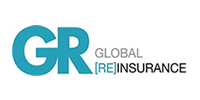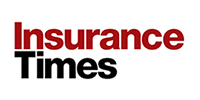Insurance DataLab analysis of the latest solvency and financial condition reports (SFCRs) reveals rising solvency coverage and improving underwriting results across both markets
The past three years have seen both the UK and Gibraltarian insurance markets reinforce their capital strength amid a difficult operating environment.

Insurers in both jurisdictions have been strengthening their solvency coverage, maintaining cautious levels of reinsurance and returning to underwriting profit in 2024/25 after a number of challenging years.
These results come as insurers continue to navigate an uncertain landscape of claims inflation, volatile investment markets and tightening regulatory oversight. Against that backdrop, the industry’s renewed capital resilience represents a clear signal of prudence and stability.
Analysis of aggregated data by market intelligence firm Insurance DataLab, published exclusively by Insurance Times, shows that solvency coverage has climbed across both jurisdictions over the past three years.
UK insurers reported an aggregate solvency coverage ratio of 178.4% in 2022/23, rising to 187.8% in 2023/24 and 188.7% in 2024/25 – their strongest position since Insurance DataLab started analysing these results.
This improvement was supported by eligible own funds increasing from £36.8bn to £38.1bn, before easing slightly to £35.3bn as the aggregate solvency capital requirement (SCR) reduced from £20.6bn to £18.7bn.
Gibraltarian insurers also strengthened their position, with aggregate solvency coverage rising from 140.0% in 2022/23 to 161.1% in 2023/24 and 165.3% in 2024/25 – a steep increase compared to previous years. Aggregate eligible own funds grew from £1.9bn to £2.8bn over the same period, while the total SCR increased from £1.4bn to £1.7bn.
Broader strengthening
These trends highlight a steady improvement in capital buffers for both markets, with the UK maintaining a larger solvency base and Gibraltar narrowing the gap in proportional terms.
Read: MGAs boost productivity as profits and growth come under pressure
Read: Broker profitability rises as growth slows
Explore more financial articles here, or discover other news analysis content here
The aggregate coverage relative to the minimum capital requirement (MCR) also improved for the 2024/25 period, reinforcing the broader strengthening in capital positions.
For UK insurers, the aggregate MCR coverage ratio increased from 481.5% in 2022/23 to 499.8% in 2024/25, supported by eligible own funds to meet the MCR of £33.0bn against an aggregate MCR of £6.6bn.
Gibraltarian insurers reported a similar upward trajectory, with MCR coverage rising from 367.9% to 435.3%, as eligible own funds to meet the MCR grew from £1.7bn to £2.6bn.
This continued improvement suggests that both markets have entered the current period with significantly greater headroom than in previous years, likely driven by the ongoing uncertainty facing markets across the globe.
Reinsurance balance
The Gibraltarian insurance market has traditionally relied more heavily on reinsurance than its UK counterpart, though the latest figures indicate a gradual shift in that balance.
Gibraltar-regulated insurers ceded an estimated 69% of their gross earned premiums in 2022/23, falling to 45% in 2023/24 and 40% in 2024/25 – and it is no coincidence that this has happened in conjunction with the rising levels of capital being held by insurers on the Rock.
UK insurers, meanwhile, reinsured between 36% and 39% of aggregate premiums across the same period, maintaining a broadly stable level of reinsurance dependence.
This narrowing differential points to a modest recalibration in aggregate risk retention, as Gibraltar insurers increase their retained exposure while continuing to benefit from strong reinsurance support.
Both markets also reported steady premium growth, with the UK’s aggregate gross written premium rising from £44.6bn in 2022/23 to £55.8bn in 2024/25 and Gibraltar’s climbing from £6.7bn to £9.8bn.
And this has also been accompanied by a marked turnaround in underwriting performance. Aggregate combined operating ratios (CORs) for both the UK and Gibraltar returned to profitability in 2024/25, reversing the losses seen in the two preceding years.
The UK’s aggregate COR improved from 102.1% in 2023/24 to 96.6% in 2024/25, while Gibraltar’s moved from 100.4% to 94.4% over the same period – making it the second year since Insurance DataLab started this analysis that the UK outperformed Gibraltar on profitability.
This rebound reflects both improved underwriting discipline and stabilising claims trends, with gross claims incurred rising moderately in the UK from £30.7bn in 2022/23 to £31.4bn in 2024/25 – and in Gibraltar rising from £5.1bn to £6.3bn amid continued premium growth.
This will be welcome relief to the insurance industry in both markets, but the strengthening of solvency ratios across both jurisdictions underlines the market’s continued prudence in managing risk and capital adequacy.
While reinsurance dynamics and capital requirements vary between the UK and Gibraltar, the direction of travel remains clear – insurers in both markets are entering the next cycle having built up greater resilience, ready for any shocks that may occur.
And as insurers balance the need for capital strength with the pressure to deliver sustainable underwriting performance, maintaining this equilibrium will be key to ensuring long-term market stability.

Hosted by comedian and actor Tom Allen, 34 Gold, 23 Silver and 22 Bronze awards were handed out across an amazing 34 categories recognising brilliance and innovation right across the breadth of UK general insurance.























































No comments yet